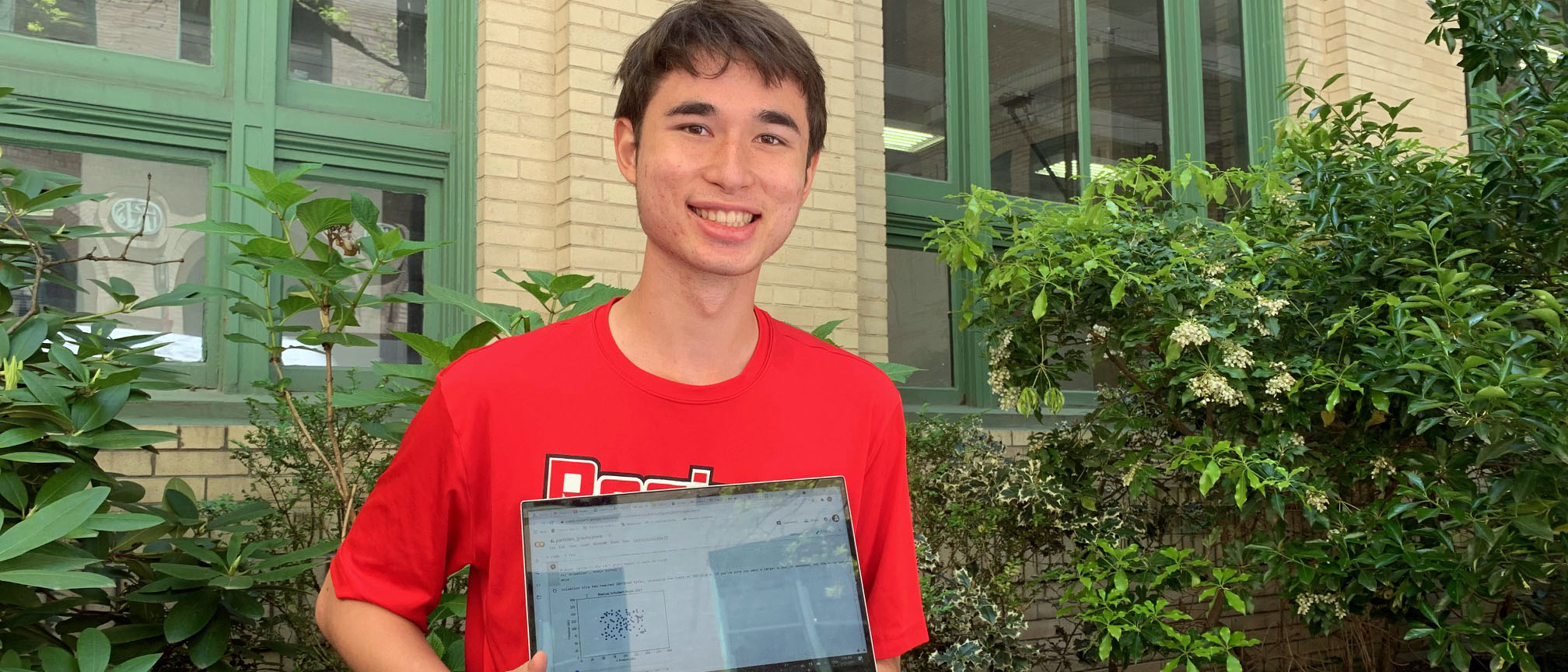Regis Senior's Research Supports Solar System Formation Theory
 Marcus Schubert '21 poses with his research simulation in the Regis Quad.
Marcus Schubert '21 poses with his research simulation in the Regis Quad.
In a remarkable achievement for Regis’ Science Research Program (SRP), senior Marcus Schubert ’21 has successfully simulated the collapse of an interstellar dust cloud due to gravity. His research not only corroborates running theories on the formation of our solar system, but supports the hypothesis that such a gravitational collapse can generate other planetary systems.
According to the Solar Nebula Theory, our solar system was formed approximately 4.5 billion years ago from a disk of spinning stardust and gas. As gravity pressed on this collection of interstellar material, the build up of pressure caused an expulsion of energy that formed our Sun, planets, and smaller celestial bodies like asteroids, moons, and comets. While a widely accepted theory, any system of more than two bodies cannot be solved mathematically and must be modeled through simulations to prove, which prompted Schubert to pursue this research question throughout his senior year.
“I have experience coding in Python from programming video games and building machine learning models in the past, so I thought it would be a good idea to try out a simulation using gravity,” said Schubert, who was mentored by Regis Physics teacher Dr. Luca Matone throughout his research project. “I find physics interesting since its various laws can be used to explain almost everything we see in the world. It's also exciting to know how much we still don't know in the field.”
Schubert’s research consisted of developing an algorithm that computed the gravitational forces acting on each interstellar mass due to all the others at a particular moment in time. As this was completed, a code would then calculate the positions each of these masses would take as a result of the forces acting on them. As time was artificially advanced, the forces and positions of the celestial bodies were constantly recomputed, and after several methodological hurdles and some creative thinking, a simulation that proved the Solar Nebula Theory emerged. Schubert’s numerical calculations, organized visually in the below display, not only show that a sudden and sizable collapse in gravity would force space masses to coalesce into a larger body (our Sun), but also that such a collapse would force some bodies (our planets) to fall into this central mass’ gravitational pull.
“Thanks to Marcus’ work, we can see how computer science plays a critical role in the sciences,” Dr. Matone said. “Scientists can test their ideas or hypotheses just to see if they are plausible before embarking on an expensive experiment or costly telescope observation. Well done, Marcus!”
Schubert will be studying Engineering at the University of Michigan next fall, where he hopes to continue exploring the passions for science and research he has developed throughout his time at Regis.
“SRP has been an awesome opportunity for me to explore my research interests,” said Schubert. “I appreciate how I can brainstorm ideas with my mentor and learn loads of invaluable advice. I really learned how to get creative with research. If I have a hypothesis and can think of a way to test it, that's research!”
One simulation run of Schubert's experiment, sped up to 16x, is shown above to demonstrate the results of a gravitational collapse on celestial bodies.
Read more Regis news